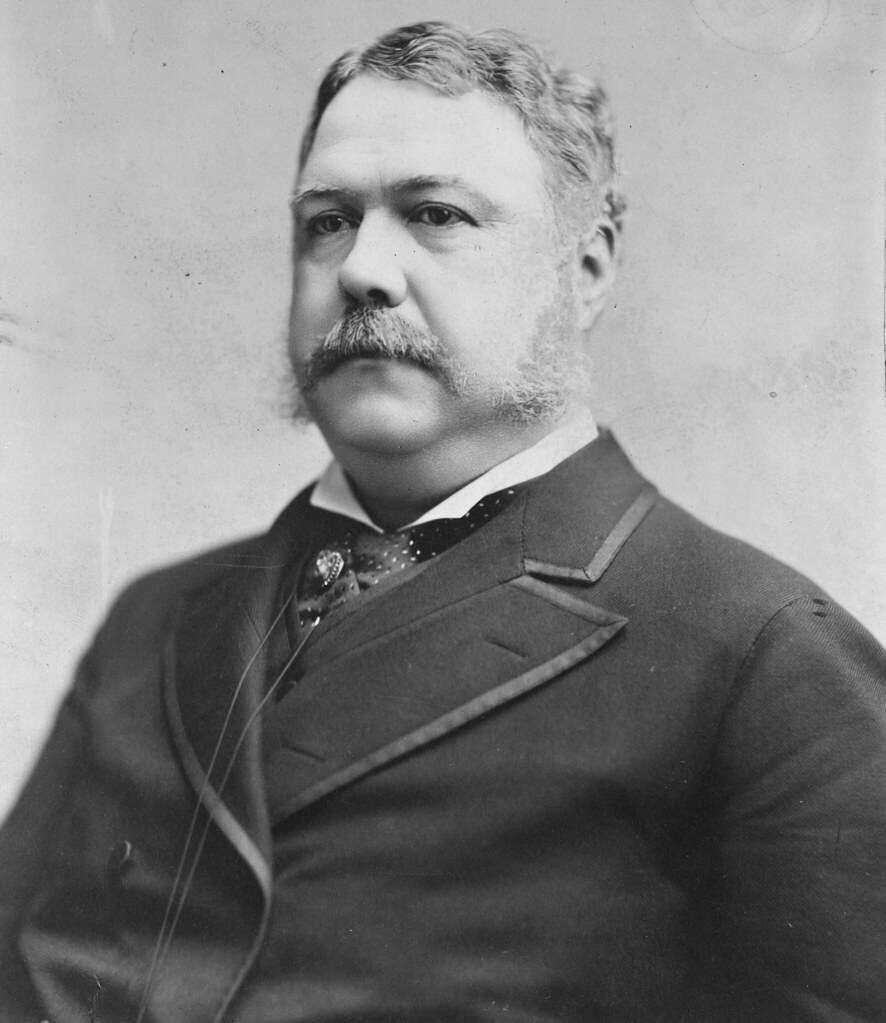REVIEW POTPOURRI: President Chester Arthur
 by Peter Cates
by Peter Cates
Chester Arthur
For me, 21st President Chester Alan Arthur (1830-1886) always gave the impression of being a stuffed shirt prig with his Billy goat sideburns and mustache. But, like his predecessors and, as of 2023, his 25 successors, he was certainly a fascinating individual with a story uniquely his own.
The tag, Gentleman Boss, became attached to him; during his years of political leadership, he was described by one journalist of the era as “usually wearing a Prince Albert coat, buttoned closely in front, with a flower in the upper button-hole and the corner of a colored silk handkerchief visible from a side pocket.”
Arthur’s childhood involved frequent changes of address and biographers have no certainty as to whether he was born in Vermont or upstate New York.
His mother, the former Malvina Stone (1802-1869), came from a very tough background in very rural Vermont while his father, William (1796-1875), was born in Ireland and was a Baptist preacher whose happy-go-lucky disposition may have led to frequent changes of churches in Vermont and upstate New York .
Arthur’s siblings included six sisters and two brothers, most of whom lived to ripe old age into the 1900s.
Arthur worked his way through law school by teaching and was admitted to the bar in 1853. He struggled to find work his first two years in Manhattan but in 1855 represented an African-American woman who had been refused transportation on a streetcar.
The client was awarded $500 and Arthur’s arguments resulted in other African-Americans receiving better treatment on public transportation.
In 1859, Arthur married Ellen Herndon (1837-1880) and they had three children – a son who died at three years old and another son and daughter, both of whom lived into the 1900s like several aunts and uncles.
Arthur’s wife died from pneumonia shortly before he became president, so his sister Mary McElroy (1841-1917) very effectively assumed hostess duties in the White House.
During the 1860s and ’70s , Arthur rose higher in New York state politics with the help of a few rather devious individuals but he kept his own hands clean and proved very effective as a Quartermaster General during the Civil War in charge of supplies for the troops; and in 1871 as collector of customs for the Port; and maintained his own reputation for complete honesty. Ironically, he never served in Congress before being nominated by the Republican strategists as Garfield’s vice-president and then, after his predecessor died from bullet wounds, entering the White House.
Arthur achieved Civil Service reforms but little else and eventually lacked the support of his own party because of its feuding divisions.
In 1884, the Democrats sent Grover Cleveland to the White House. Totally exhausted by his workloads, Arthur’s health went downhill within 20 months after leaving Washington and he died on November 18, 1886, at the young age of 56.
Responsible journalism is hard work!
It is also expensive!
If you enjoy reading The Town Line and the good news we bring you each week, would you consider a donation to help us continue the work we’re doing?
The Town Line is a 501(c)(3) nonprofit private foundation, and all donations are tax deductible under the Internal Revenue Service code.
To help, please visit our online donation page or mail a check payable to The Town Line, PO Box 89, South China, ME 04358. Your contribution is appreciated!



Leave a Reply
Want to join the discussion?Feel free to contribute!